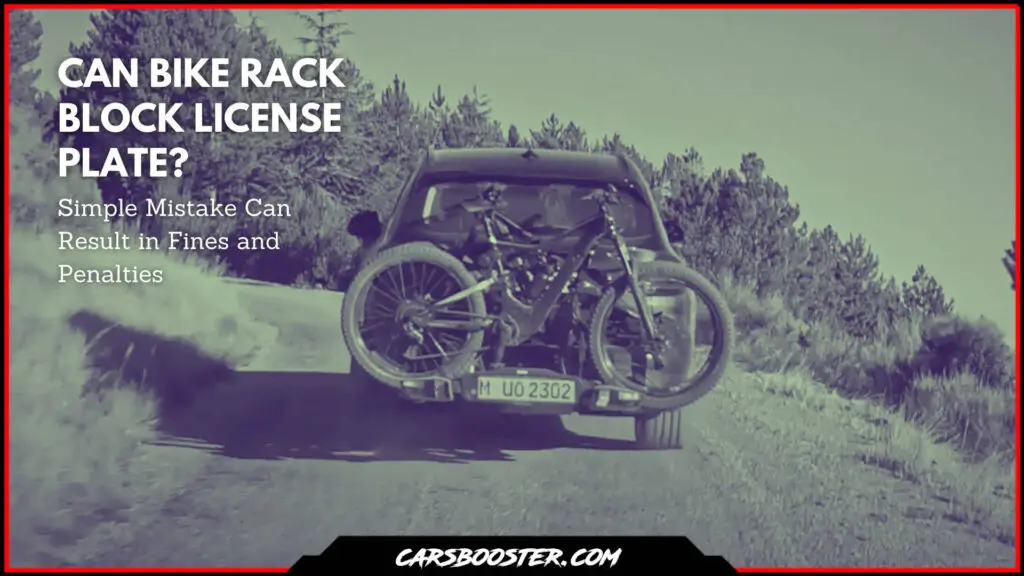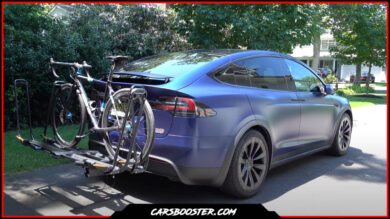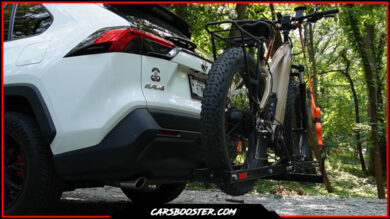
Biking has gained popularity due to its environmental friendliness and affordability. Therefore, more people are now choosing to cycle rather than drive. However, using a bike rack to transport bikes can be troublesome due to potential legal issues that many cyclists are oblivious of. One of the primary concerns is whether bike racks have the potential to obstruct license plates.
This article aims to delve into the intricate details of bike rack designs, laws governing license plates, and how bike racks can obstruct license plates. Moreover, we will also discuss what can be done to avoid legal troubles related to bike racks.
In short: Bike racks can obstruct your license plate, however choosing and installing a bike rack probably can prevent any future complications.
Design of Bike Racks
Bike racks are diverse in design and shape, tailored to their specific use and bike-carrying capacity. They come in various materials such as metal, plastic, and rubber and are commonly attached to cars’ rooftops or trunks.
However, some bike racks can be attached to the hitch or spare tire, while others are mounted on the rear. It’s important to install the bike rack correctly to avoid legal problems.
Make sure to verify that your bike rack fits your particular vehicle by checking the manufacturer’s guidelines before making your purchase.
Moreover, the bike rack must be installed securely to prevent damage to the bike or car and potential accidents. Improperly installed bike racks can also create visibility issues, leading to blocked views for the driver, and creating safety hazards for other drivers on the road.
It’s essential to note that different bike rack types can affect license plate visibility differently. For instance, a roof-mounted bicycle rack might not obscure a vehicle’s license plate when compared to a hitch-mounted one which could be an issue from different perspectives depending on the angle you look at it.
Laws Regarding License Plates
License plates play a crucial role in identifying vehicles, and their display is mandatory for all car owners. The law requires license plates to have a designated location and visibility from afar.
Most states in America require license plates to be displayed both in the front and back of a vehicle, and failure to do so may lead to significant financial consequences and legal troubles.
It’s crucial to keep license plates legible and free from any obstructions, including bike racks. This means that a minimum distance of 50 feet is required for license plates to be legally visible.
It’s essential to understand that each American state possesses varying rules pertaining to license plates hence, it’s necessary to study the regulations within your own state to avoid breaking any laws.
Consequences of a Blocked License Plate
Concealing the license plate with a bike rack, or other objects will result in harsh penalties determined based on state legislation and the severity level of the offense. Typically, you can expect to receive a citation that carries a monetary fine.
In some circumstances, the punishment may increase to include auto confiscation or driver’s license withdrawal.
Maintaining the license plate noticeable and following state legislature is critical to steer clear of any legal difficulties.
How Bike Racks Can Block License Plates
Bike Racks have the potential to cause substantial difficulty for license tags, as the tag becomes unviewable leading to possible legal repercussions for vehicle operators.
The design and placement of the bike rack can play a significant role in how much of an obstruction it poses to the license plate. Rear-mounted bike racks, for instance, are much more likely to obscure the plate.
The number of bikes on the rack can also play a part in how visible the plate is. If the bike rack is overloaded with bikes, it can be very difficult to see the plate from some angles.
An angled installation of the bike rack can further exacerbate the challenge of seeing the license plate from diverse perspectives.
If the placement of the bike rack is either too near or too far, it might render it harder to observe the license plate from certain vantage points, thereby rendering identification tough for police forces.
Options for Mounting Bike Racks
Car owners have various options when it comes to mounting bike racks without blocking their license plates. One of the most popular options is a roof-mounted bike rack, which is highly versatile and leaves the trunk space free. The racks can also be easily removed when not in use, which is great for infrequent riders.
Another option is a hitch-mounted bike rack, which can be attached to the hitch of the car. These racks are highly convenient for frequent bike riders, as they are easy to install and remove. Plus, they mostly don’t obstruct the view of the license plate, ensuring that car owners are not penalized for violations.
But for those who prefer trunk-mounted bike racks, it’s essential to ensure proper installation and placement to avoid obstructing the view of the license plate.
Alternative Solutions for License Plate Display
There are numerous ways to avoid obstructing your license plate while using a bike rack. One of the most popular options is to use a license plate bracket that attaches to the bike rack. These brackets are specifically designed to hold the license plate in a visible location while still allowing you to transport your bike.
Another solution is to use a license plate relocation kit. These kits allow you to move the license plate to a more visible location on the car, such as the front bumper or side of the car. This can be a convenient solution for car owners who frequently use a bike rack and want to avoid any potential legal issues.
Each individual state has its unique set of regulations relating to the display of license plates, therefore it would be advantageous to investigate these statutes ahead of altering their arrangement.
Furthermore, it’s imperative that your registration plate is plainly visible without obstruction whatsoever, as disobeying the statute can trigger fines and judicial consequences.
FAQs
Q: Can I get a ticket for having a blocked license plate?
A: Yes, if your license plate is blocked by a bike rack or any other object, you can receive a citation that requires you to pay a fine.
Q: What are the consequences of having a blocked license plate?
A: The consequences of having a blocked license plate can vary depending on the state and the severity of the offense. In most cases, you can receive a citation that requires you to pay a fine. However, in some cases, you can face more severe penalties, such as having your car impounded or having your driver’s license suspended.
Q: What are the best options for mounting a bike rack?
A: The best options for mounting a bike rack depend on your personal preferences and the design of your car. Roof-mounted bike racks and hitch-mounted bike racks are less likely to obstruct the view of the license plate, and they can be easily removed when not in use.
Conclusion
In conclusion, bike racks can block license plates, which can result in legal consequences for car owners. It’s important to ensure that your license plate is visible at all times, even when using a bike rack.
This means that you must ensure that the bike rack does not obstruct the view of the license plate from any angle. Additionally, you can use alternative solutions like license plate brackets or relocation kits to avoid any legal issues. By following these guidelines, you can enjoy the convenience of using a bike rack without any legal issues.



